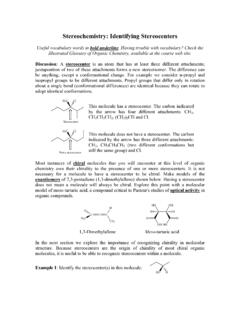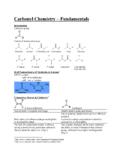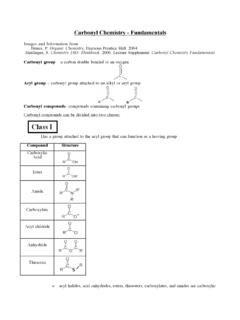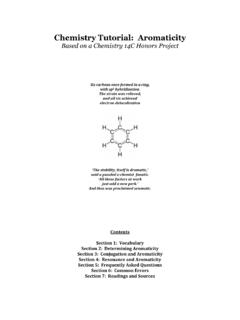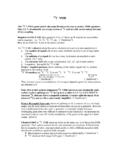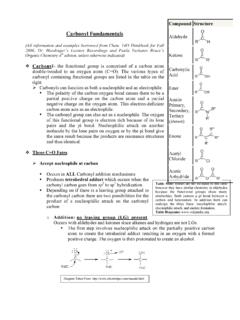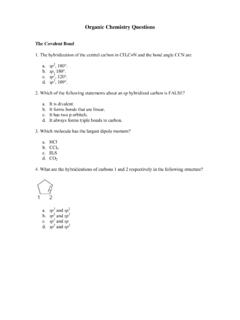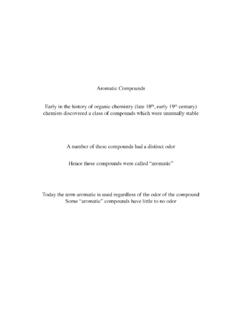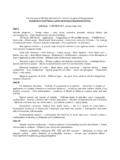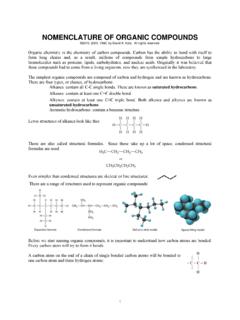Transcription of Brønsted‐Lowry Lewis Acid Base - UCLA Chemistry …
1 1 Acids and Bases: The Influence of Structure on Reactivity Background: Br nsted lowry Lewis acid A proton ( H+ ) donor An electron pair acceptor Base A proton ( H+ ) acceptor An electron pair donor An electrophile ( electron loving ) has a partial or full positive charge. It is a reactant that accepts a pair of electrons (interchangeable with Lewis acid ). A nucleophile ( nucleus loving ) is a species that is readily able to share lone pairs or pi bonds OR has a partial or full negative charge. It is a reactant that provides a pair of electrons (interchangeable with Lewis base). According to the Br nsted lowry definition, According to the Lewis definition, The following reaction can be described with both definitions: 2 IMPORTANT NOTE: To compare the strength of acids, we examine their conjugate bases. A base is stronger when it is able to share its electron pair.
2 Because they influence electron density, the following structural effects influence basicity. When a factor takes electron density from the atom that wants to share an electron pair, basicity is decreased: hence the molecule is a weaker base. The weaker the base is, the stronger the conjugate acid is. Structural Effects [ordered from least influential (left) to most influential (right)] Note: another factor, the effect of formal charge, varies in its influence. Trend #1: Resonance usually reduces basicity. Why? Resonance delocalizes electron density from the atom that wants to share its electrons, which leads to the structure being a weaker base/stronger conjugate acid . 3 Trend #2: For atoms of the same formal charge, as the atomic radius of the atom providing the electron pair increases, basicity decreases. Note: this rule does not refer to the size of the whole molecule!
3 Trend #3: As electronegativity of the atom providing the electron pair increases, basicity decreases. 4 Trend #4: Inductive Effect Definition: The effect on electron density in one portion of a molecule due to electron withdrawing or electron donating groups elsewhere in the molecule Electron withdrawing group Electron donating group ( electron releasing group) Inductive effect depends on the following: 1. Electronegativity of the group Fluorine withdraws more electron density from neighboring atoms towards itself than Hydrogen would. = lower basicity (smaller pKa). 2. Number of electron withdrawing or electron donating groups The greater the number of electron withdrawing groups/ The smaller the number of electron donating groups = lower basicity (smaller pKa). 3. Distance from the group The smaller the distance from the electron withdrawing group/ The greater the distance from the electron donating group = lower basicity (smaller pKa).
4 Trend #5: Formal Charges How does formal charge play a role in basicity? Should everything else be equal, a negative formal charge means that there is excess electron density. With this, the atom will share its electron density. Thus, a negative charge leads to an increase in basicity. 5 References "Acids." Wikipedia. Web. 28 May 2012. < >. "Atomic Radius." Wikipedia. Web. 28 May 2012. < > Hardinger, Steven. Chemistry 14C: Organic Molecular Structures and Interactions: PowerPoint Lectures for Chemistry 14C with PowerPoint CD. Plymouth, MI: Hayden McNeil, 2012. Print. Hardinger, Steven. Chemistry 14C: Structure of Organic Molecules: Course Thinkbook: Concept Focus Questions, OWLS Problems, Practice Problems. Plymouth, MI: Hayden McNeil, 2012. Print. Illustrated Glossary of Organic Chemistry . Chemistry 14C. Web. 28 May 2012. < >. "More on Resonance Effects on Acidity and Basicity.
5 " Chem Wiki. UC Davis. Web. 28 May 2012. < > "OChemPal." OChemPal. Web. 28 May 2012. < b/amphoteric/>.
